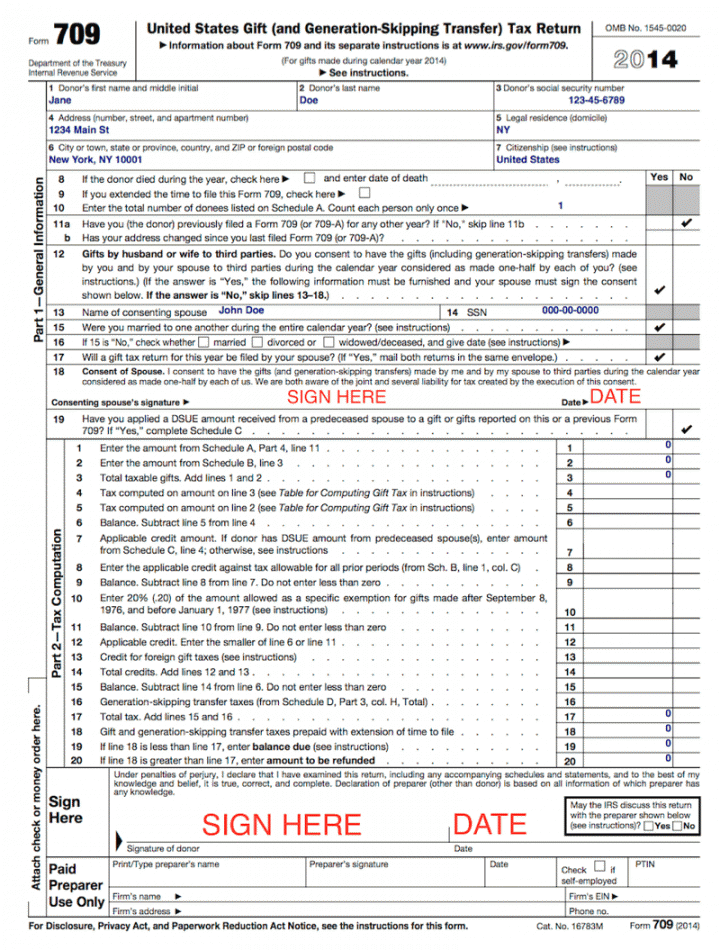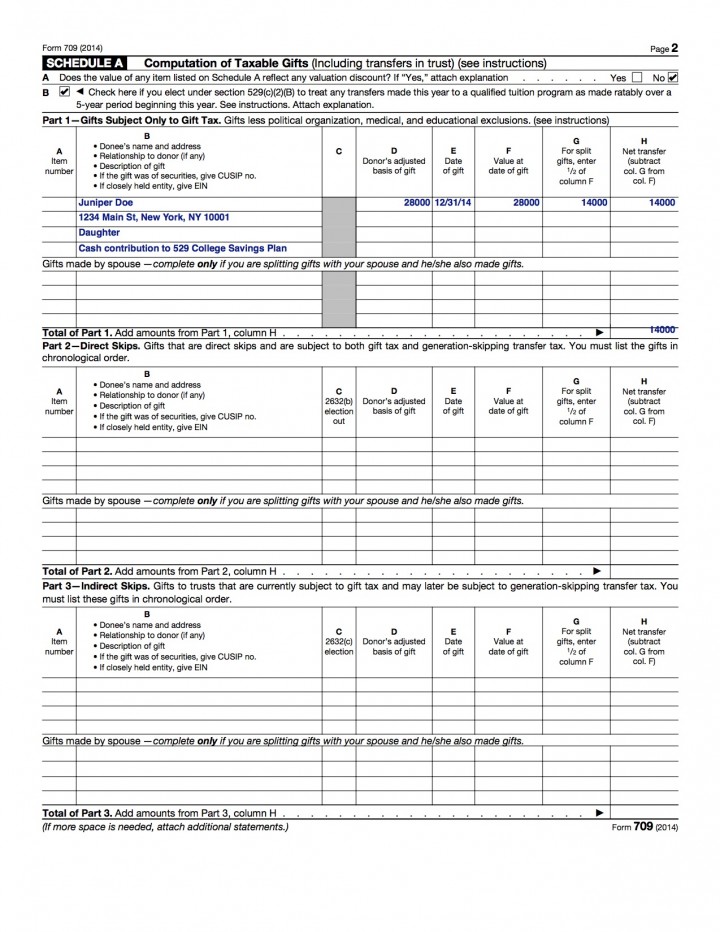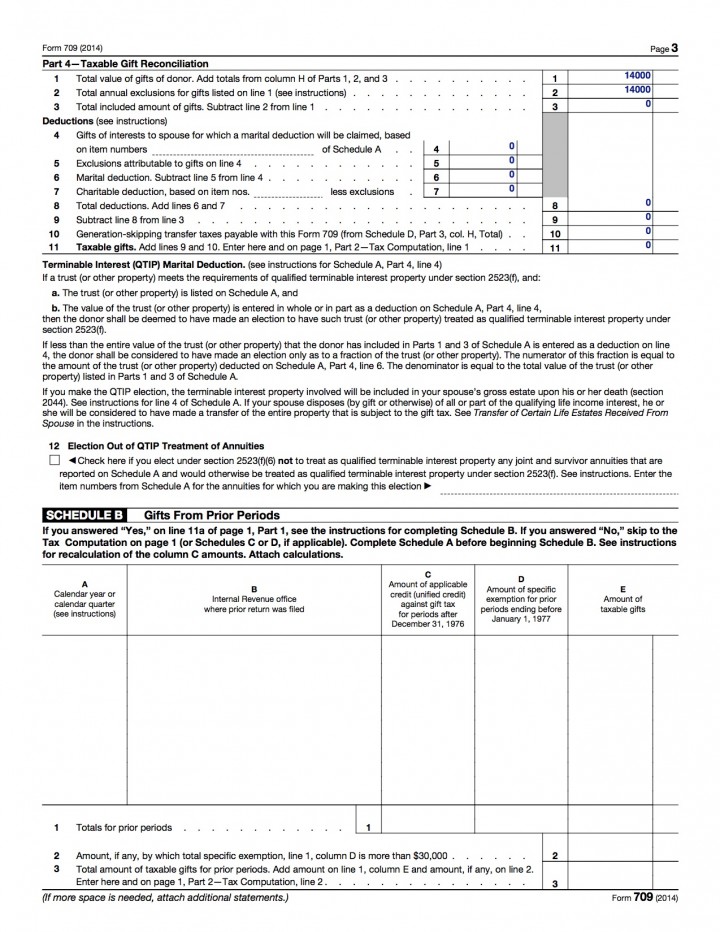 Updated. Let’s say you are fortunate enough to be able to make a large contribution to a 529 college savings plan, perhaps for your children or grandchildren. You read from multiple sources that you are able to contribute up to $75,000 at once for a single person or up to $150,000 as a married couple (2018), all without triggering any gift taxes or affecting your lifetime gift tax exemptions. (From 2013-2017, these numbers were $70k/$140k). What you are doing is “superfunding” or “front-loading” with 5 years of contributions, with no further contributions the next four years.
Updated. Let’s say you are fortunate enough to be able to make a large contribution to a 529 college savings plan, perhaps for your children or grandchildren. You read from multiple sources that you are able to contribute up to $75,000 at once for a single person or up to $150,000 as a married couple (2018), all without triggering any gift taxes or affecting your lifetime gift tax exemptions. (From 2013-2017, these numbers were $70k/$140k). What you are doing is “superfunding” or “front-loading” with 5 years of contributions, with no further contributions the next four years.
Those are pretty big numbers, but any contribution above $15,000 will require you to file a gift tax return because that is the annual gift tax exclusion limit for 2018. ($14,000 for 2013-2017.) You’ll need to fill out IRS Form 709 [pdf], “United States Gift (and Generation-Skipping Transfer) Tax Return”. The instructions are quite long and confusing. You ask your accountant and they suggest talking to your estate lawyer. You may wish to avoid paying the $400 an hour or whatever it will cost as the form should be pretty straightforward.
So how do you fill out form 709 for a large but simple 529 contribution? Here are the resources that I found most helpful:
- IRS Form 709 Instructions, section on Qualified Tuition Programs.
- Preparing Gift Tax Returns (2012) – Boston Bar Association (PDF)
- YouTube video and Powerpoint presentation: 10 Biggest Mistakes made on Gift Tax Returns (by an estate attorney, 529 stuff starts at 43:25)
- Barack Obama’s Form 709 (2008)
- SavingForCollege Sample 709 Part 1, Part 2
- Bayalis is the Answer 529 Guide
(Note that I have found what I consider minor errors and/or inconsistencies in some of the sample 709 forms above.)
Here’s a redacted version of my completed Form 709. Let me be clear that I am not a tax professional or tax expert. I am some random dude on the internet that did his own research to the best of his abilities and filled out the form accordingly. This is what my form looks like. It could be wrong. You’ll need to make changes to conform to your specific situation. Feel free to offer a correction, but please support your statement.
For my version, I am assuming that you and your spouse contributed the maximum $140,000 together. (I didn’t actually contribute that much.) The 2014 form is shown below, but I just did this for another kid using the 2017 form and I couldn’t find any differences. Note that you’ll need to file two separate gift tax returns, one for you and one for your spouse. Mail them to the IRS in the same envelope, and I like to send them certified mail.
Here is my Form 709, Schedule A, Line B Attachment
Form 709, Schedule A, Line B Attachment
– Donor made a gift to a Qualified State Tuition Program (a 529 plan).
– Total amount contributed $140,000 in 2014.
– Donor elects pursuant to Section 529(c)(2)(b) of the IRS Code of 1982, as amended to treat the gift as having been made equally over a 5-year period.
– The gift was made jointly by the taxpayer and the taxpayer’s spouse on January 1st, 2014 and will be split equally in half.
– Election made for $140,000 over 5 years is equal to $28,000 total per year, or $14,000 per person per year.
– The contribution is for
Juniper Doe
Daughter
1234 Main St
New York, NY 10001
When to file Form 709. When taking the 5-year election, you must fill out the gift tax return (Form 709) by April 15th of the year following the year in which in the contribution was made. So if you make the contribution in 2018, you must file Form 709 by April 15th, 2019. If you make the upfront contribution in the first year and then make no future contribution in the next four years, you do not have to file a gift tax return after the one you did for the first year.
What if you’re late? Well, you should file the Form 709 as soon as possible. If you did not exceed the limits then technically there is no gift tax due, and there is no penalty that I could find for late filing when there is no taxes due. Still, I would file ASAP.
The tax information set forth in this article is general in nature and does not constitute tax advice. The information cannot be used for the purposes of avoiding penalties and taxes. Consult with your tax advisor regarding how aspects of a 529 plan relate to your own specific circumstances.



 The Best Credit Card Bonus Offers – March 2024
The Best Credit Card Bonus Offers – March 2024 Big List of Free Stocks from Brokerage Apps
Big List of Free Stocks from Brokerage Apps Best Interest Rates on Cash - March 2024
Best Interest Rates on Cash - March 2024 Free Credit Scores x 3 + Free Credit Monitoring
Free Credit Scores x 3 + Free Credit Monitoring Best No Fee 0% APR Balance Transfer Offers
Best No Fee 0% APR Balance Transfer Offers Little-Known Cellular Data Plans That Can Save Big Money
Little-Known Cellular Data Plans That Can Save Big Money How To Haggle Your Cable or Direct TV Bill
How To Haggle Your Cable or Direct TV Bill Big List of Free Consumer Data Reports (Credit, Rent, Work)
Big List of Free Consumer Data Reports (Credit, Rent, Work)